The Way of Kings: Book One of the Stormlight Archive by Brandon Sanderson
Introduction From the Back Cover:
I long for the days before the Last Desolation.
The age before the Heralds abandoned us and the Knights Radiant turned against us. A time when there was still magic in the world and honor in the hearts of men.
The world became ours, and we lost it. Nothing, it appears, is more challenging to the souls of men than victory itself.
Or was that victory an illusion all along? Did our enemies realize that the harder they fought, the stronger we resisted? Perhaps they saw that the heat and the hammer only make for a better grade of sword. But ignore the steel long enough, and it will eventually rust away.
There are four whom we watch. The first is the surgeon, forced to put aside healing to become a soldier in the most brutal war of our time. The second is the assassin, a murderer who weeps as he kills. The third is the liar, a young woman who wears a scholar’s mantle over the heart of a thief. The last is the highprince, a warlord whose eyes have opened to the past as his thirst for battle wanes.
The world can change. Surgebinding and Shardwielding can return; the magics of ancient days can become ours again. These four people are key.
One of them may redeem us.
And one of them will destroy us.
What Drew Me to the Book:
As anyone that’s visited Following that Raven in the last couple of years has likely surmised, Brandon Sanderson is currently my favorite modern fantasy writer so to say that I was looking forward to The Way of Kings would be something of an understatement. And even if I wasn’t already a huge fan, who could look at that epic Michael Whelan cover and not be drawn to the book!? It’s one of the strongest covers I’ve encountered and I suspect that more than a few readers will be gained gazing into the possibilities it suggests in its striking color and detail.
The Review:
Let me clarify that I will be reviewing The Way of Kings based on the Macmillan audio performance by fan favorites Michael Kramer and Kate Reading. I purchased the large tome for my library shelves as well, and am very impressed by the production values, illustrations, and reference material that it contains and will be referring to it often in the future to heighten my experience with the series no doubt, but I couldn’t pass up the chance to listen to the book as read by these two veteran voice actors that I already enjoy so much. Truthfully, it may have been their best performance yet. Whatever the case, they certainly brought their “A” game and I highly recommend that fans of the book (or potential fans) give the audio version a listen if at all possible.
The Way of Kings: Book One of the Stormlight Archive is the inaugural entry in a 10-volume epic, and it hits the ground at a sprint, thrusting the reader right into battle following an impressive prologue/prelude set-up which sets a grim mood following the wake of an apparent betrayal amongst immortal warriors, bringing desolation to the land of Roshar. The battles that ensue are fought not only by highly trained soldiers in the Alethi and Parshendi armies (the two warring sides in a 6-year struggle) but on a larger scale between great warriors donning coveted armored carapaces with superhuman capabilities, likewise by unarmored individuals able to harness the Stormlight prevalent in a world of high storms, granting them preternatural abilities, and one of Sanderson’s best magical “systems” yet. I can also say right off the bat that Sanderson crafts these clashes (and, yes, there are many) with meticulous care and outside the characters themselves the scenes of battle were the strongest part of the novels for me, rich in detail and never losing sight of the excitement that should be implicit in such scenes, particularly those involving close combat.
Following four principle characters throughout, The Way of Kings provides strong characterization in each case: Szeth is a reluctant assassin whose great power is as mysterious as his past and he gets the ball rolling quickly in the book with a thrilling battle and the death of a king, Shallan is a young woman who rides the high seas seeking an opportunity to apprentice under a gifted scholar, and heretic, named Jasnah; but there are motives underlying her quest that will have great repercussions the both of them, particularly as she begins to confront herself. Dalinar, the “Blackthorn,” is an aging Alethi high prince, a wielder of Shardplate armoer, and a commander in King Elhokar’s army who awakens to visions of a cryptic “final desolation” while striving to unite his fellow high princes as a unified force to win the war against the drawn out war against the Parshendi and prepare for its coming. Finally, Kaladin, a great military man (and former surgeon’s apprentice) in the Alethi army tragically finds himself a slave to the very army in which he was enlisted after having been betrayed by a “light eyes” he once trusted. His trials as a bridge-runner (a job with a rather high mortality rate) provide the bulk of the narrative, and seeing him awaken to the potential within himself in this dire situation is a joy to behold throughout the narrative, particularly as his and Dalinar’s story begin to run parallel, ultimately converging.
Roshar is world whose hard landscape is filled with ever present danger, be it the constant threat of death on the shattered plains in battle, terror at being confronted by one of the many massive beasts that roam the chasms, mistrust and deceit among companions and peers, assassinations around every bend, or even the elements themselves that ravage the landscape with consistent high storms to deadly consequence. The characters that inhabit this world have to have a bit of grisliness in them simply in order to survive and while I have run across the minor criticism that the main players are cut a little too rigid in this mold, offering black and white morality in their roles, it is a criticism that I cannot level as I readily found what I perceived to be real “character” in both the righteous and deplorable actions of notable players (never having been one to believe that “character” is necessarily found in the gray areas) and real concern for the sticky situations that certainly provided the reader opportunities to fret over the actions they took and the consequences that followed. You’ll root for and against the principle and supporting cast and that certainly indicates something worthwhile to me. Additionally, there’s a lot to be said for supporting characters like Jasnah, Sylphrena (“Sil”), Navani, Wit and Saddeus (among others) that populate the novel. At times they outright steal the show and, along with the particulars of Sanderson’s magic system, make the world a much richer, more interesting, place to visit.
The tale interweaves through each character with ease as they come into spheres of influence one with another, the story working its threads skillfully toward a cohesive whole despite a few unanswered questions at the novels end — but such is the case with this being the first in a large multi-volume series and I was not unsatisfied at the conclusion. To the contrary, I was champing at the bit for the next novel. With my studies ramping up I knew that 2010 would be a hectic one and that I wouldn’t be able to read nearly as many novels of my own choosing as I’d like, but I am glad to have been able to finally experience this one and am glad to say that it’s definitely a journey worth taking — incidentally, something the novel itself has more than a little to say about.



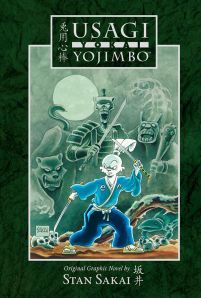


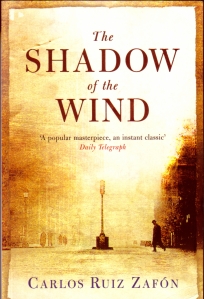 “Every book, every volume you see here has a soul. The soul of the person who wrote it and of those who read it and lived and dreamed with it.”
“Every book, every volume you see here has a soul. The soul of the person who wrote it and of those who read it and lived and dreamed with it.”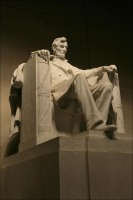 In September 2008, Down East Books released an anthology of short stories edited by Noreen Doyle entitled
In September 2008, Down East Books released an anthology of short stories edited by Noreen Doyle entitled  a deep respect for virtue — all of which that’s on full display in the short story And Dream Such Dreams. Told from three compelling points of view, we follow President Lincoln through a pivotal phase in the Civil War, enjoying insights unique to each of the storytellers. Allred’s literary method allows the reader to slowly form a whole of the puzzle that’s laid before him following the cryptic comments in Chamberlain’s opening speech as the narrative becomes ever clearer as we travel with our heroes through the soles of their individual experiences — not unlike an interested observer in a dream — towards the conclusion in this worthwhile tale of deep humility and self sacrifice.
a deep respect for virtue — all of which that’s on full display in the short story And Dream Such Dreams. Told from three compelling points of view, we follow President Lincoln through a pivotal phase in the Civil War, enjoying insights unique to each of the storytellers. Allred’s literary method allows the reader to slowly form a whole of the puzzle that’s laid before him following the cryptic comments in Chamberlain’s opening speech as the narrative becomes ever clearer as we travel with our heroes through the soles of their individual experiences — not unlike an interested observer in a dream — towards the conclusion in this worthwhile tale of deep humility and self sacrifice.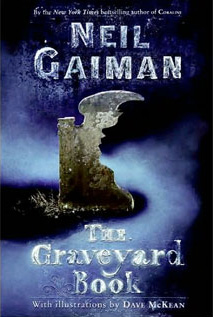
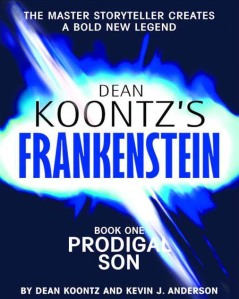 Introduction & Overview: Having been thoroughly impressed by Dean Koontz’ celebrated Odd Thomas series, I thought that I would do myself a favor and try another series of his that had caught my attention while searching for something new on the shelves, namely, Koontz’ Frankenstein. Now, here I should probably confess that outside of being a huge fan of Mel Brooks and Gene Wilder’s classic Young Frankenstein and being a child of the 80’s that enthusiastically swallowed up the campy Monster Squad flick and its gentle take on the Frankenstein monster that I’ve never really been all that keen on the myth. I’ve always preferred reading about the howling creatures of the night, and maybe a few vampires and swamp things here and there to reading about Frankenstein or his creation. I suppose that as ingenious a performance as it was, Boris Karloff’s theatrical version wasn’t enough to a yung-un weaned on Dr. Doom, The Joker and the Red Skull to ever really frighten and as a result I never really gave Mary Shelley’s Frankenstein, or his “monster” much of a chance (though, thankfully, the lesson of who the real “monster” of the two was wasn’t completely lost on me).
Introduction & Overview: Having been thoroughly impressed by Dean Koontz’ celebrated Odd Thomas series, I thought that I would do myself a favor and try another series of his that had caught my attention while searching for something new on the shelves, namely, Koontz’ Frankenstein. Now, here I should probably confess that outside of being a huge fan of Mel Brooks and Gene Wilder’s classic Young Frankenstein and being a child of the 80’s that enthusiastically swallowed up the campy Monster Squad flick and its gentle take on the Frankenstein monster that I’ve never really been all that keen on the myth. I’ve always preferred reading about the howling creatures of the night, and maybe a few vampires and swamp things here and there to reading about Frankenstein or his creation. I suppose that as ingenious a performance as it was, Boris Karloff’s theatrical version wasn’t enough to a yung-un weaned on Dr. Doom, The Joker and the Red Skull to ever really frighten and as a result I never really gave Mary Shelley’s Frankenstein, or his “monster” much of a chance (though, thankfully, the lesson of who the real “monster” of the two was wasn’t completely lost on me). Introductions: It’s been almost 15-years since a good friend of mine recommended Orson Scott Card’s
Introductions: It’s been almost 15-years since a good friend of mine recommended Orson Scott Card’s 
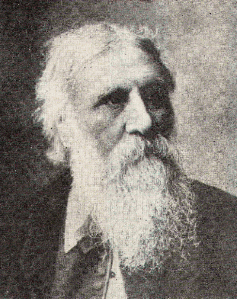 When I made the rather hasty decision of starting a blog based on my love of books, and it came time to find a name for it, I racked my brain thinking of something that might be witty, clever, and memorable for visitors — but when that endeavor utterly failed — my mind focused back on the fantasy novel that has likely had the greatest, and most profound, impact on me over the years and that was George MacDonald’s 1895 masterpiece, Lilith. Arguably his greatest work. In it, there is a peculiar raven that helps kick off the tale and he serves to be a wonderful surprise in the book and I thought it an appropriate theme of ‘beckoning beyond’ for the blog here.
When I made the rather hasty decision of starting a blog based on my love of books, and it came time to find a name for it, I racked my brain thinking of something that might be witty, clever, and memorable for visitors — but when that endeavor utterly failed — my mind focused back on the fantasy novel that has likely had the greatest, and most profound, impact on me over the years and that was George MacDonald’s 1895 masterpiece, Lilith. Arguably his greatest work. In it, there is a peculiar raven that helps kick off the tale and he serves to be a wonderful surprise in the book and I thought it an appropriate theme of ‘beckoning beyond’ for the blog here.




